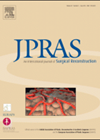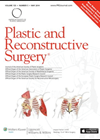
Journal Reviews
Platysma muscle use for oral sphincter substitution or countering excessive pull of a free muscle, following facial palsy
The use of the platysma muscle as a pedicled ‘apron’ flap in order to minimise the overactivity of a free muscle transfer, used in the treatment of facial palsy, is described in admirable detail. The successful results are carefully assessed...
The Accordion Severity Grading System in the assessment of negative outcomes following carpal tunnel release
Classification systems come and go, some more memorable than others. Without such systems it is not possible to compare like with like and so it must be conceded that they are necessary, although I personally find them difficult to commit...
Columellar strut in rhinoplasty
Several techniques are described to improve nasal tip shape; most of them include suture techniques or invisible grafts. In this article the author wants to put emphasis in the role of the columellar strut graft as a method to correct...
Psychosocial dysfunction during nasal reconstruction
Reconstructive surgery following skin cancer malignancy creates important levels of psychosocial distress, especially if it is located in an important aesthetic zone of the face like the nose. The authors present their findings of a prospective study group of patients...
Male pattern baldness is not all in the genes
Gentlemen, be advised (if it’s not already too late) that you may be able to influence your chances of going bald. The authors of this study compared the patterns of baldness in 92 pairs of identical twins and correlated these...
Principles of facial allotransplantation
In the seven years since the first partial face transplant was performed, a number of units around the world have raced to stamp their mark on this exciting and promising advance. In doing so, some have allowed their ambitions to...





